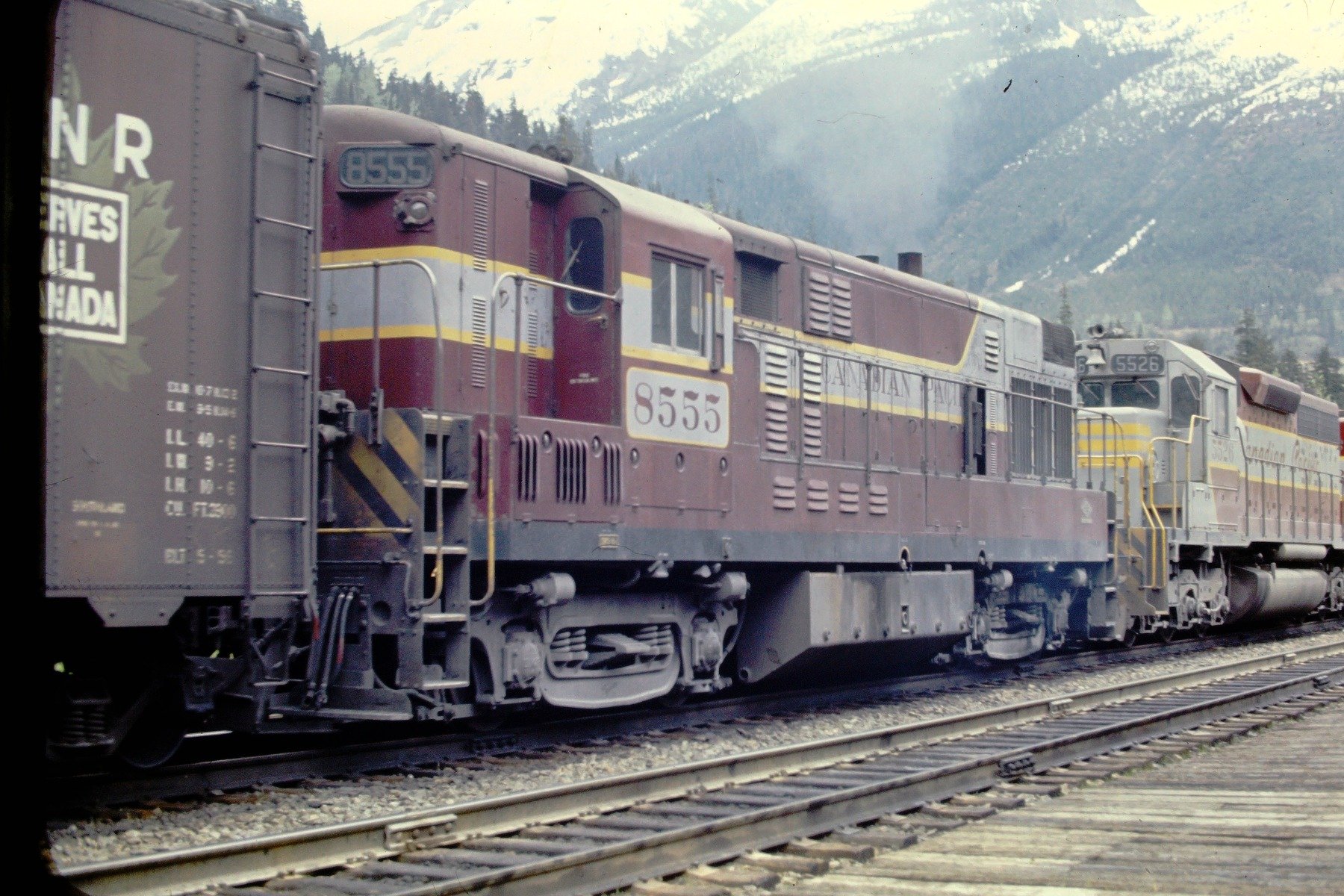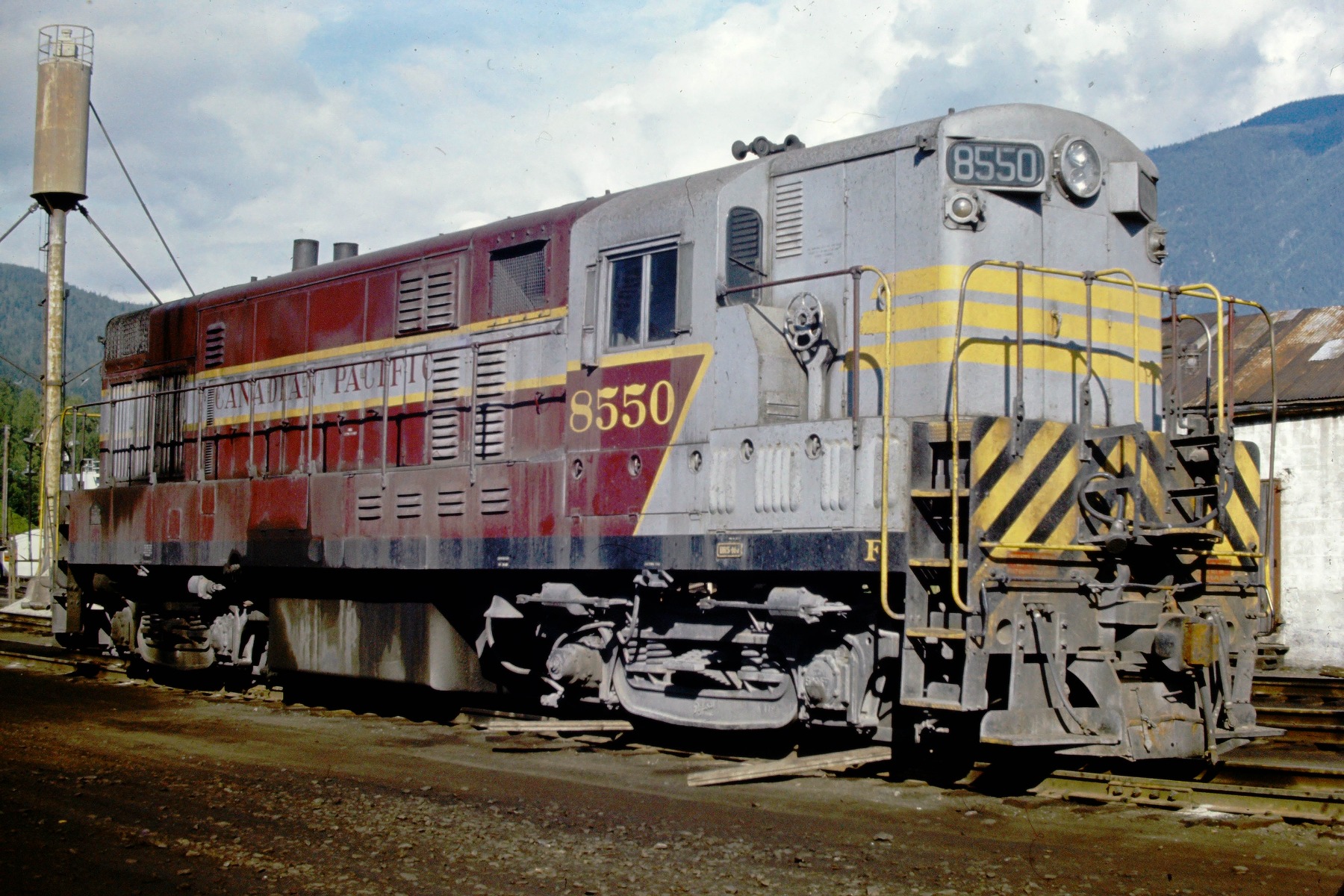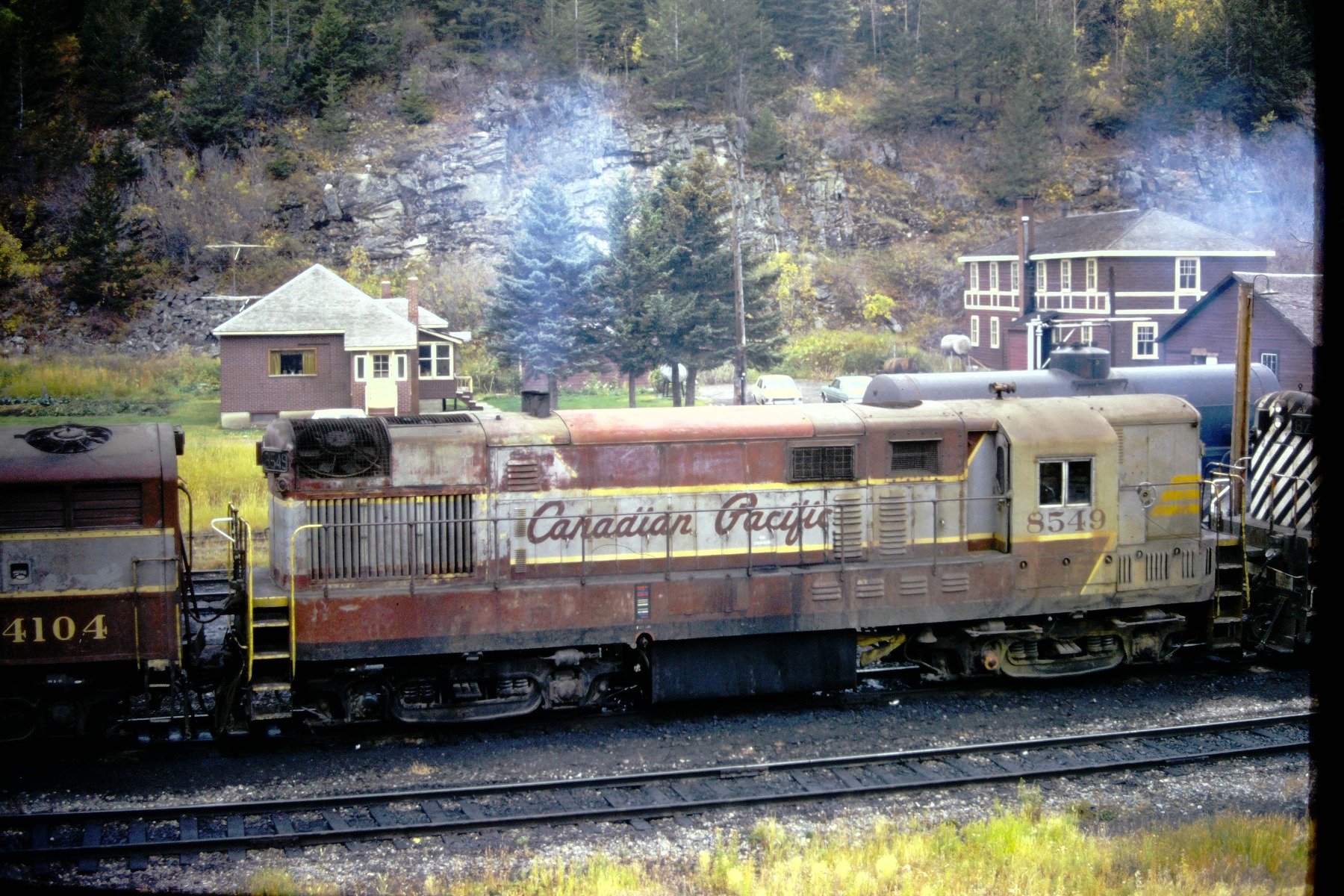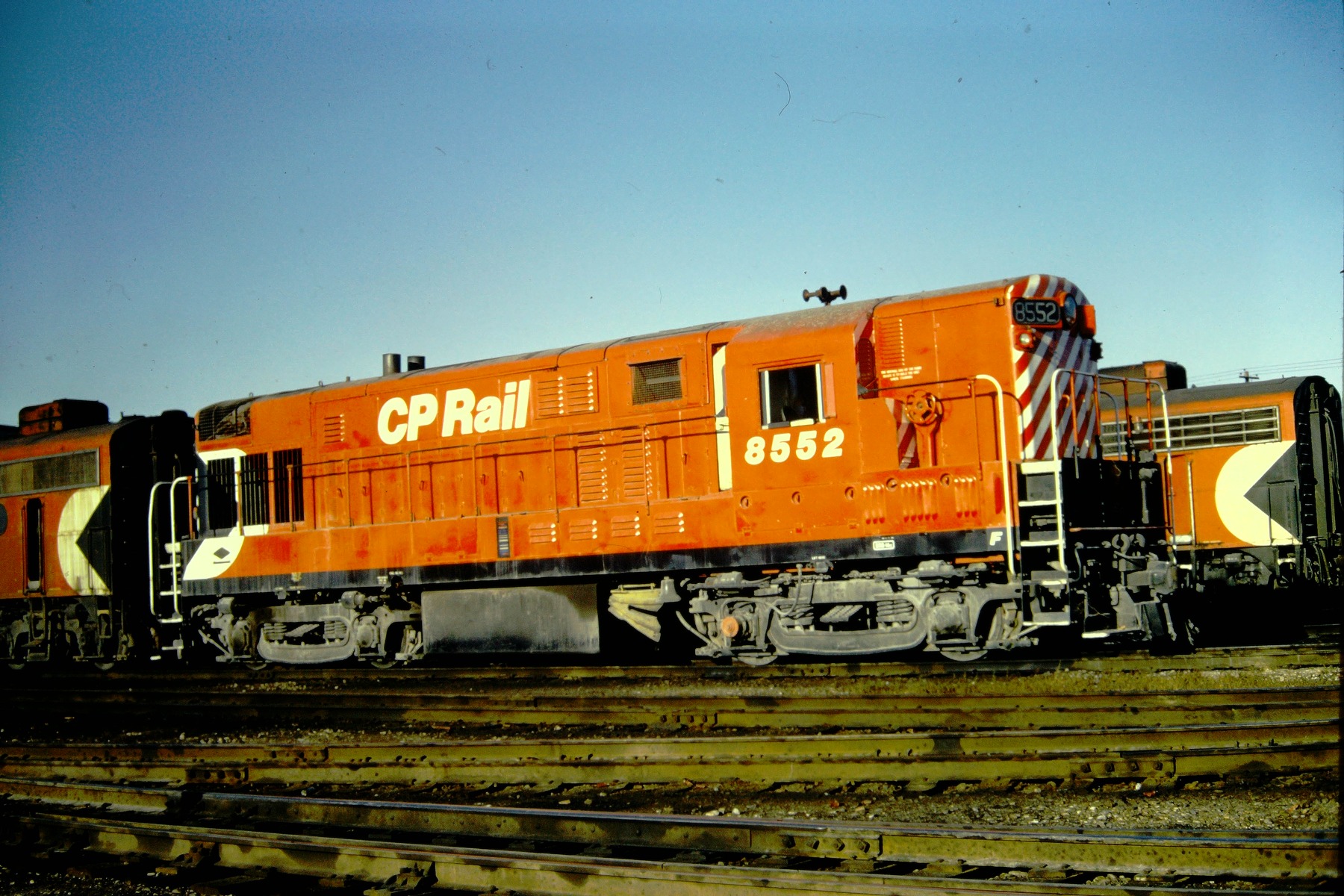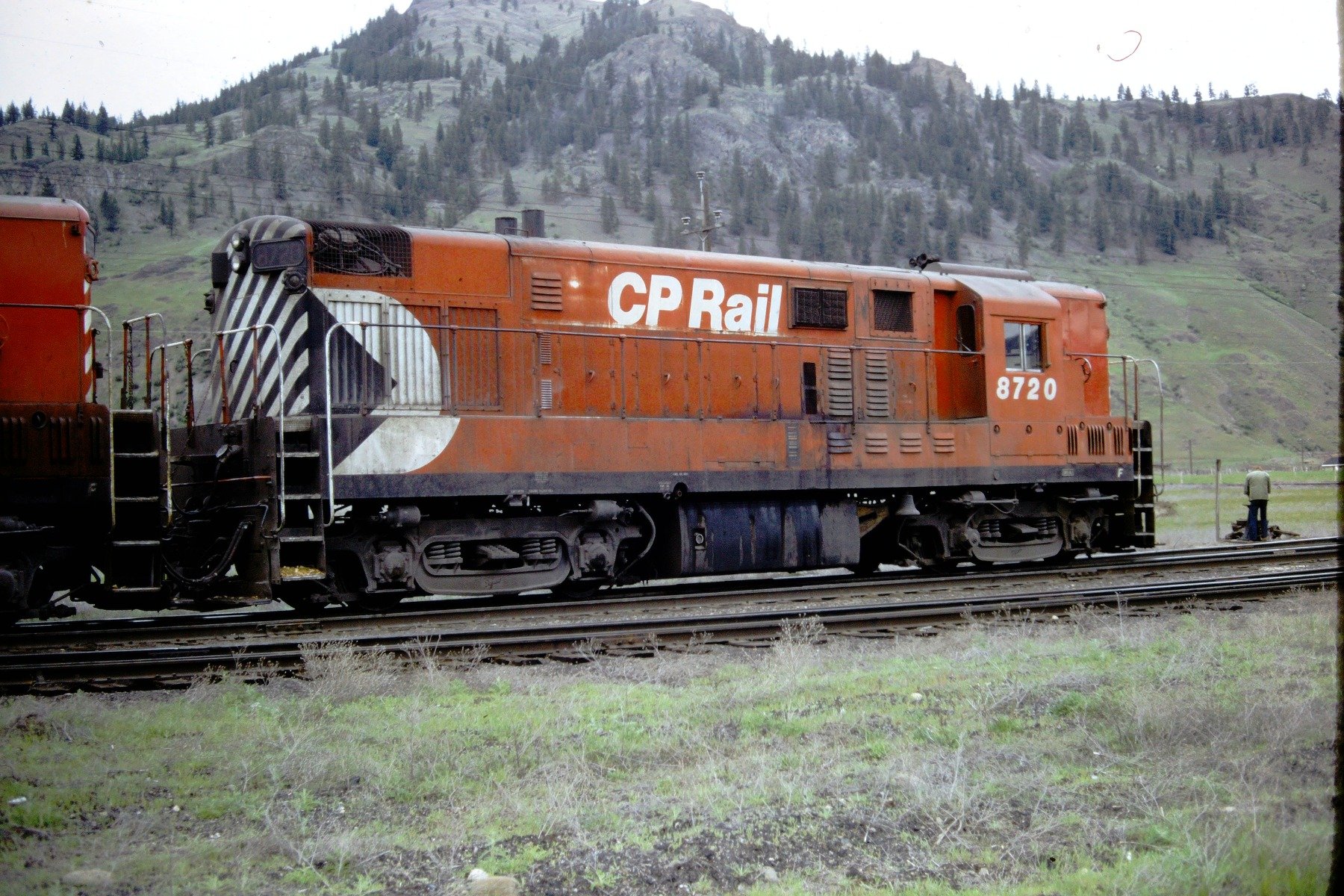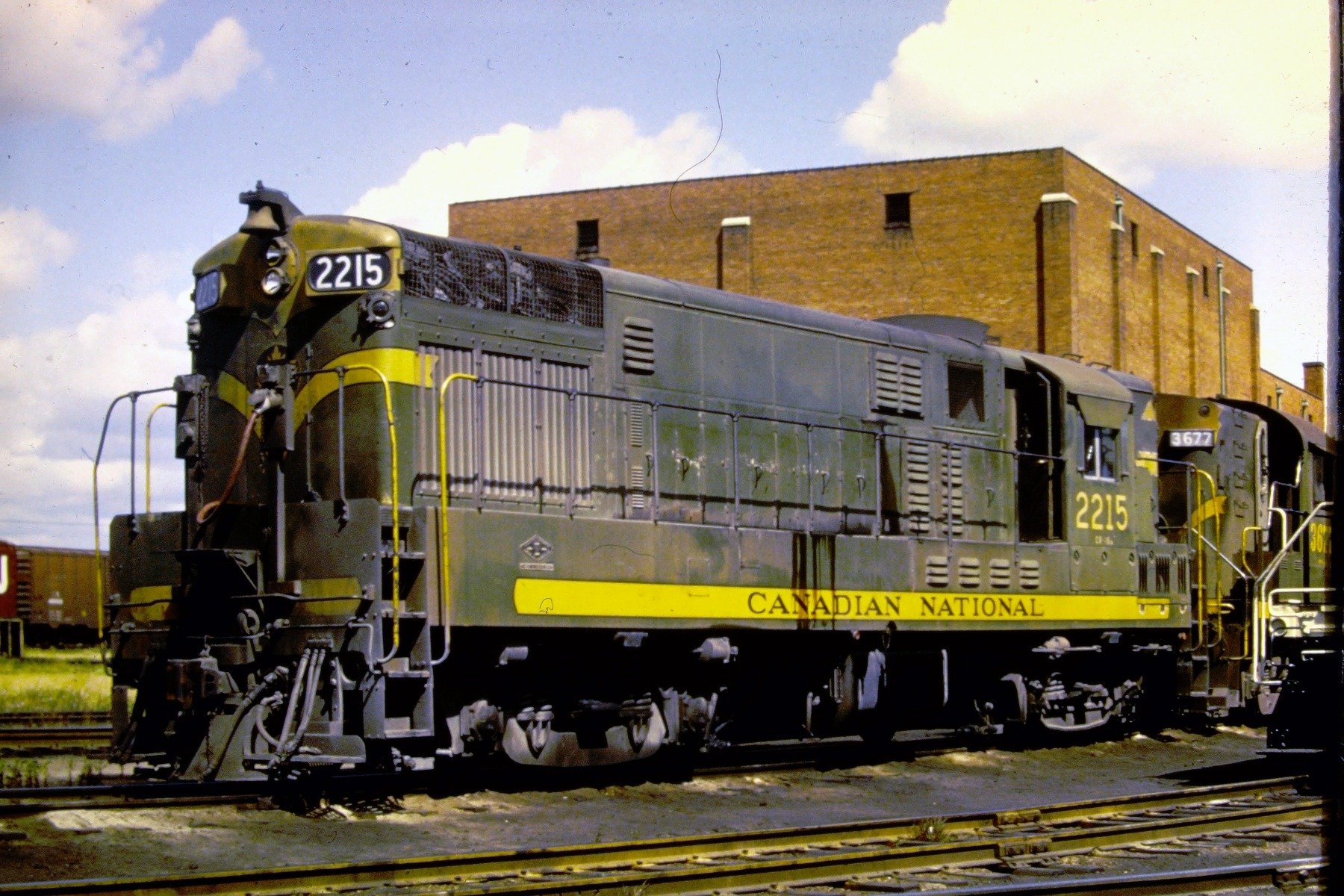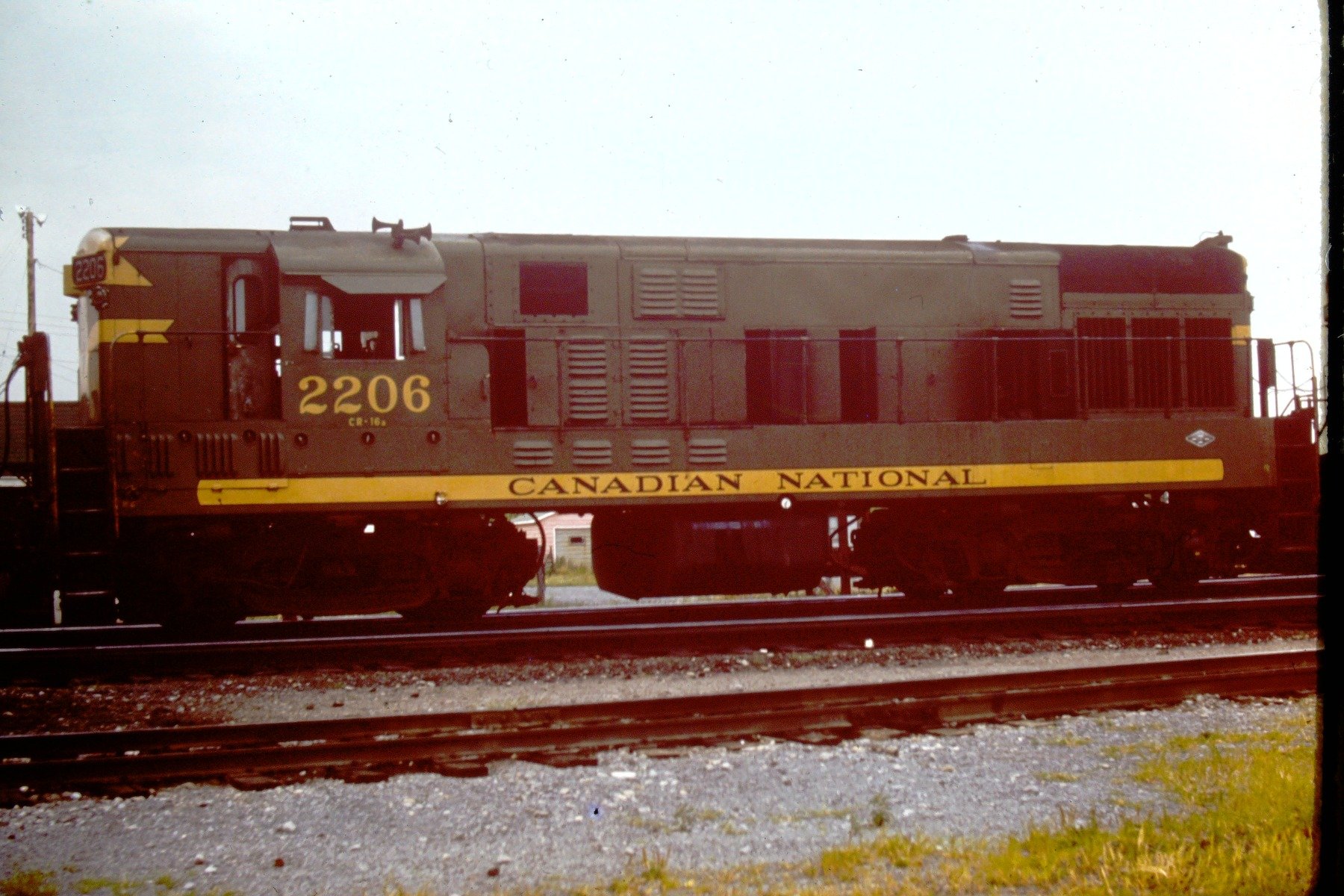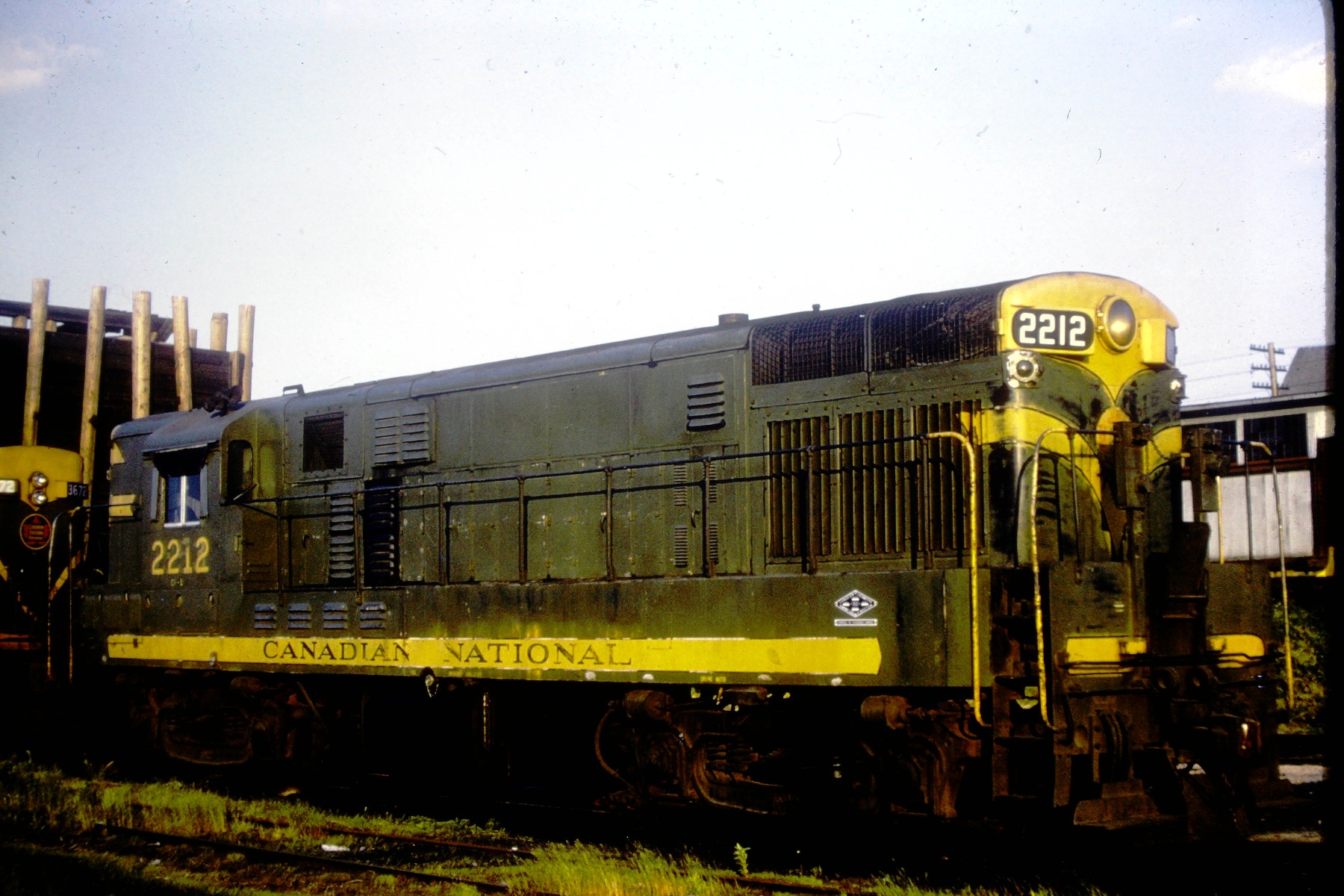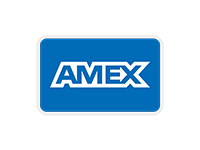H16-44 Road Switcher Masterclass
- by Craig Walker
Introduction
The model H16-44 model diesel road switcher was designed and built by the Fairbanks-Morse Company in Beloit, Wisconsin from April 1950 to February 1963. Fairbanks-Morse used a model designation system in which model number ‘H16-44’ signified ‘H’ for Hood carbody, ‘16’ for 1600 horse power and ‘44’ for 4 motors on 4 axles.
Between 1950 and 1963 a total of 299 model H16-44 road switchers were purchased by 20 customers in the U.S., Canada and Mexico.
Design Features
The model H16-44 was an upgrade version of the earlier F-M model H15-44 1500 horsepower road switcher. The engine was upgraded from 1,500 to 1,600 horsepower. The H16-44 locomotive initially shared an identical platform and carbody with the predecessor model H15-44. The H16-44 had a B-B wheel arrangement, mounted on a pair of two-axle AAR trucks with all four axles powered. After late-1950 the AAR trucks were almost exclusively replaced with Fairbanks-Morse trucks.
There were two distinctive car body styles of the H16-44. Those built before 1955 and those built after. The carbody styling of H16-44 units built before 1955 (Phase I) was largely influenced by noted industrial designer Raymond Loewy who gave the road switcher soft, beveled touches, clean lines, sloping body lines and a protrusion in the long hood around the radiator shutters. Cab side windows included inoperable ‘half-moon’-shaped panes resulting in oblong-shaped windows. To reduce manufacturing costs the curved window panes were eliminated on later production. From 1953 on, the raised elongated headlight mounting was omitted. Later models can be spotted by their straight ends and lack of superfluous trim. Three radiator cooling fans were installed in the top of the long hood end, mounted about 30 degrees from the horizontal. – one on the right side and two on the left. Only three fans were installed even though there were four positions. Wire grills covered the top of the fan area and part way down each side. On units delivered before March 1955 the radiator shutters on each side of the long hood extended full height down to the walk way.
Units delivered after March 1955 had a car body style (Phase III) that closely resembled the boxy F-M TrainMaster diesels. The side walkways were raised and the design of the short and long hoods was simplified. The height of the radiator shutters was reduced due to the higher walkways.
Units delivered after late 1950 it had drop-side equalizer, swing-bolster, B-B two-axle trucks with 9’4” wheel base and 42” wheels, common on F-M four-axle switchers. Dynamic brakes were an optional feature. A screened rectangular opening near the top of each side of the long hood, forward of the cab, indicated the presence of dynamic brakes.
The H16-44 locomotive height was 14’6”, width 10’4”, length inside knuckles 54’0” and total weight 246,000 lbs. In June 1953 the car body length was increased from 54’0” to 55’0”. The maximum speed was 65 mph (105 km/h).
The H16-44 was powered by a Fairbanks-Morse standard 2-cycle 38D-8 1/8 opposed- piston prime mover which could produce 1,600 horsepower. The engine had two crankshafts, one above the eight vertical cylinders and one below. The F-M engine design was originally developed and used to power the U.S. Navy’s World War II submarines.
A steam generator could be ordered for units to be used in passenger service. It was a Vapor-Clarkson OK-4625 steam generator installed within the short hood. Units ordered without a steam generator had a 10-ton concrete block in their short hoods for ballast.
Units produced after June 1954 included electrical equipment by General Electric instead of Westinghouse.
The cost of a new H16-44 in 1954 was $151,712.
Production
The F-M plant in Beloit, Wisconsin built 241 units from 1950 to 1963.
The Canadian Locomotive Company, a subsidiary of Fairbanks-Morse after 1956, had licence to manufacture F-M designs in Canada. The CLC plant in Kingston, Ontario built fifty-eight H16-44 units from March 1955 to May 1957. The 58 H16-44 units were the most numerous model of the 212 F-M-designed locomotives constructed in Kingston by CLC. The first production was 18 units for the Canadian National. These were followed by 40 units for the Canadian Pacific.
The first H16-44 was completed in April 1950 for the Missouri-Kansas-Texas and the last unit was completed in March 1963 for the Chihuahua al Pacifico Railroad of Mexico.
F-M ceased producing diesel locomotives in 1963 with the completion of the eight H16-44 units for the Chihuahua Pacifico.
Variations
Over the 13 years of production there were numerous railroad-specific details such as fuel tanks, hood doors, louvers, handrails, classification lights, number boards, bell and horn locations.
From June 1954 until February 1955 the H16-44 car body (Phase II) incorporated most of the features of the TrainMaster car body except the original radiator shutters were retained.
Units delivered after March 1955 (Phase III) were equipped with F-M C-Liner type trucks with forged-steel drop-side equalizers.
Starting in the mid 1960’s the Chihuahua Pacifico embarked on a program to modernize its H16-44s and chopped the short hood on about a dozen of its H16-44s at its La Junta shops.
Original Buyers, 1950 to 1963
| Akron, Canton & Youngstown | 8 |
| Alabama Great Southern (SOU | 6 |
| Baltimore & Ohio | 10 |
| Bosques de Chihuahua | 2 |
| Canadian National | 18 |
| Canadian Pacific | 40 |
| Central Railroad of New Jersey | 4 |
| Chihuahua al Pacifico | 30 |
| Delaware, Lackawanna & Western | 6 |
| Long Island Railroad | 8 |
| Milwaukee Road | 37 |
| Missouri-Kansas-Texas | 5 |
| New York Central | 13 |
| New York, New Haven & Hartford | 25 |
| Pennsylvania | 10 |
| Pittsburgh & West Virginia | 4 |
| Santa Fe | 20 |
| Southern | 10 |
| Union Pacific | 3 |
| Virginian | 40 |
Owners of Phase III H16-44’s
Baltimore & Ohio
In December 1952 B&O purchased two Phase I units (906-907) with the Loewy style carbody. B&O assigned them class FSF-1 and later renumbered them 6700-6701. In 1955 B&O purchased three Phase III units (925-927) with the TrainMaster style carbody. They were B&O class FSF-2 and were later renumbered 6702-6704 and later 9737-9739. In 1957 B&O purchased four more Phase III units (6705-6709) with the TrainMaster style carbody and dynamic brakes. They were B&O class FSF-3 and were later renumbered 9740-9743. All B&O units had 900 gallon fuel tanks.
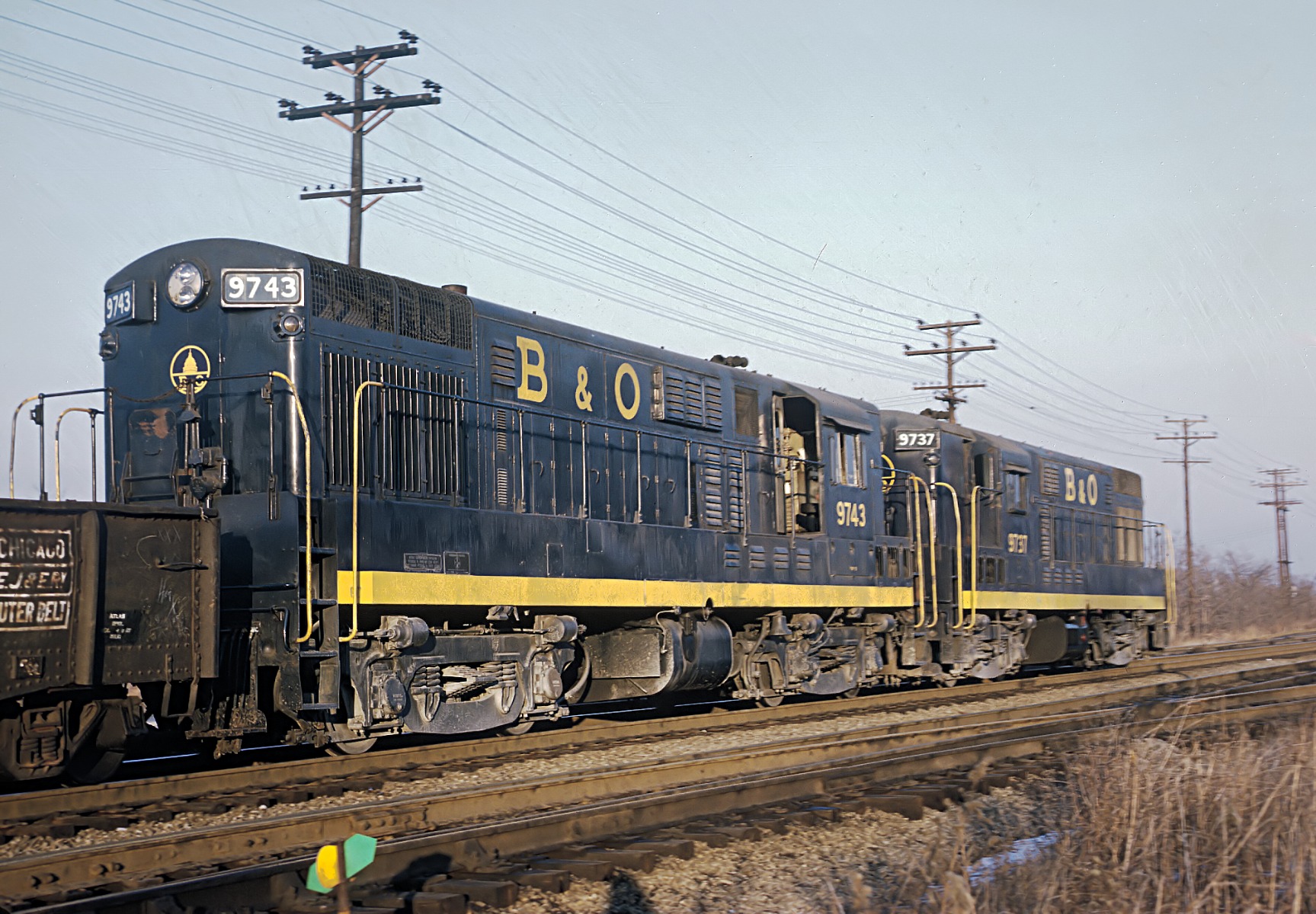
Milwaukee Road
The Milwaukee Road purchased 29 new H16-44 units in 1954 with the Phase I Loewy car body style. Originally numbered 2450-2508, they were renumbered 400-428. In 1956 Milwaukee Road bought an additional eight Phase III units with the TrainMaster body style. Originally numbered 2509-2516, they were renumbered 429-436. All were retired between 1967 and 1976.
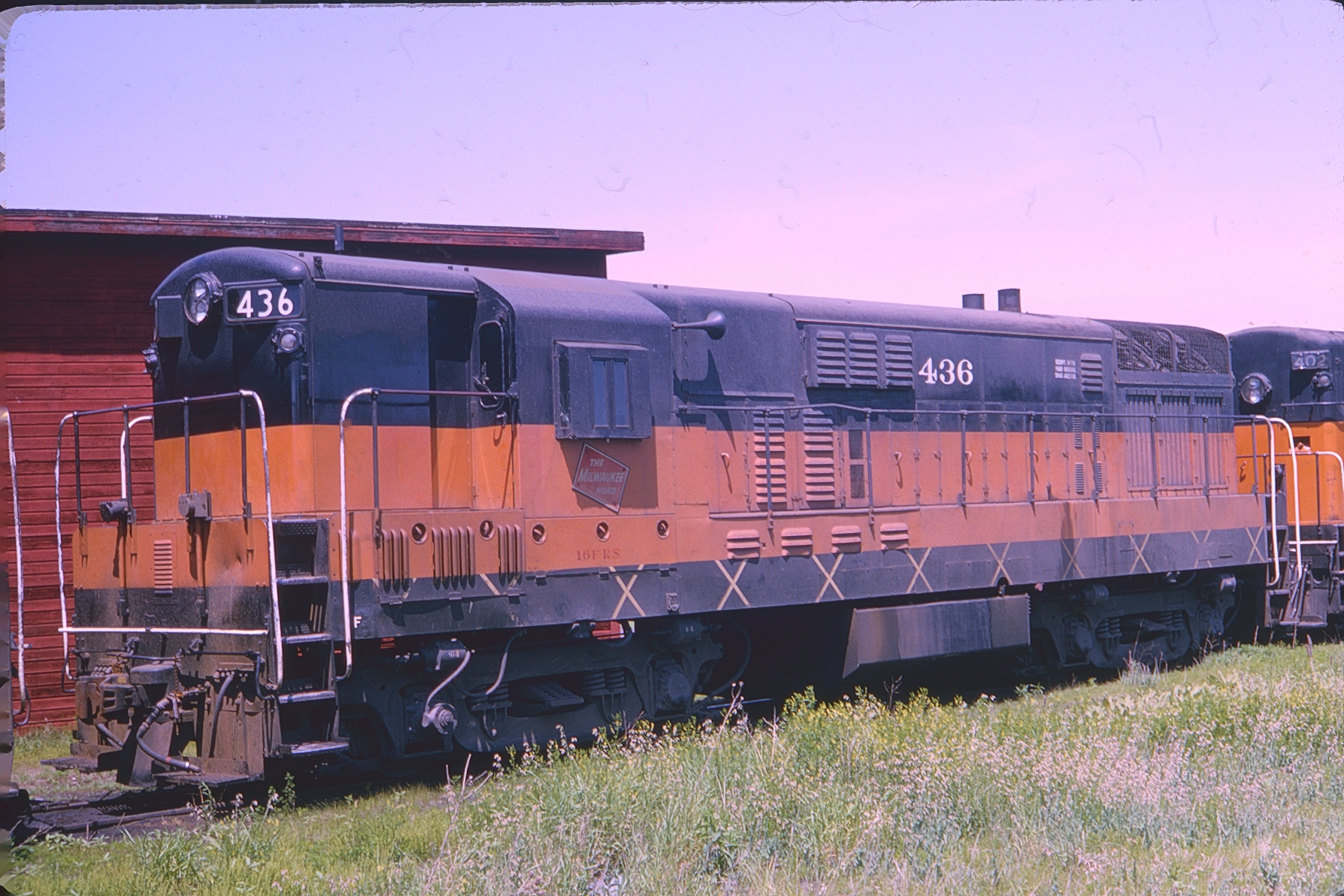
Ladd,IL Karl Henkels collection GJS
New Haven
In November 1950 New Haven bought 10 units with steam generators (590-599) and Phase I Loewy styled carbodies. In mid 1956 New Haven bought an additional 15 units with steam generators (1600-1614) and Phase III TrainMaster style carbodies. In 1969 NH 1600’s became Penn Central (5160-5174) when NH was included in the 11-month old Penn Central merger.
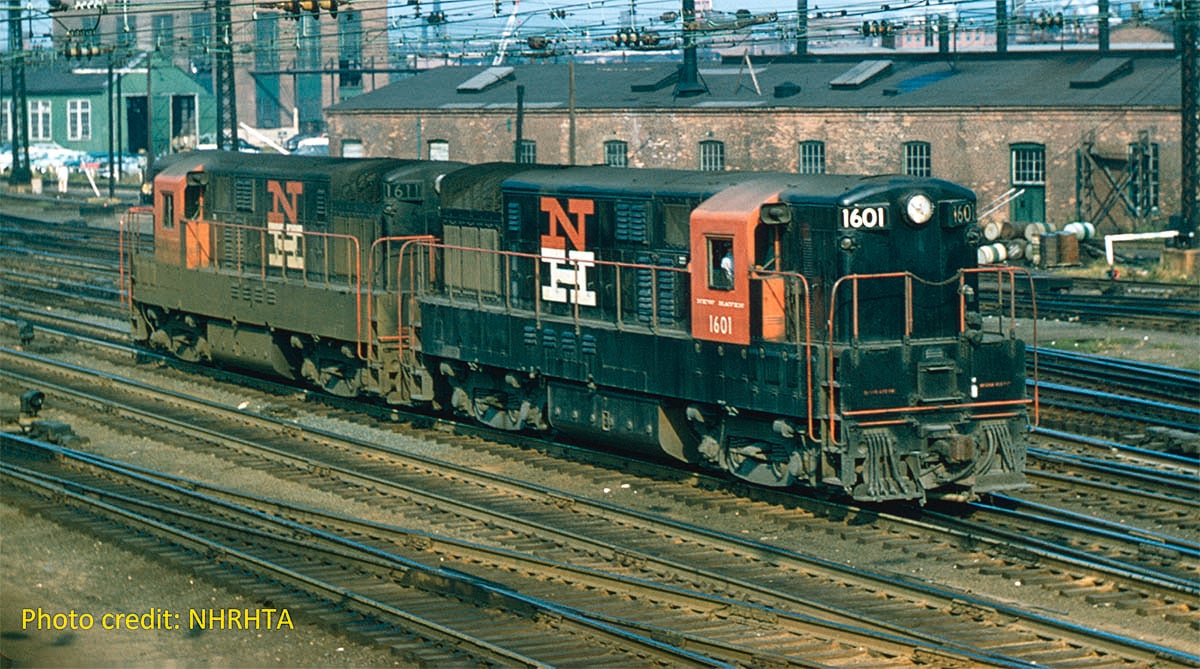
Norfolk & Western
Four Pittsburgh & West Virginia Phase III units (90-93), built in 1957, were inherited by the N&W in 1964 and became N&W 90-93. Virginian Phase III units 34-49 were inherited by the N&W in 1959 and became N&W 134-149.
Penn Central
After its formation in 1968 Penn Central acquired the following H16-44 locomotives.
Thirteen NYC Phase I units (7000-7012), built from July to October 1951, became PC 5100-5112. Ten PRR Phase I units (8807-8816), built in April-May 1952, became PC 5150-5159. Fifteen NH Phase III units (1600-1614), built from June 1956 to August 1956, became PC 5160-5174. The PC units were painted in the black paint scheme.
Virginian
The Virginian purchased 40 new H16-44’s (10-49) from F-M between June 1954 and October 1957. Virginian 34-49 Phase III units were transferred to N&W in December 1, 1959. Photo Shows unit 46 after renumbering into N&W 146 in 1962.
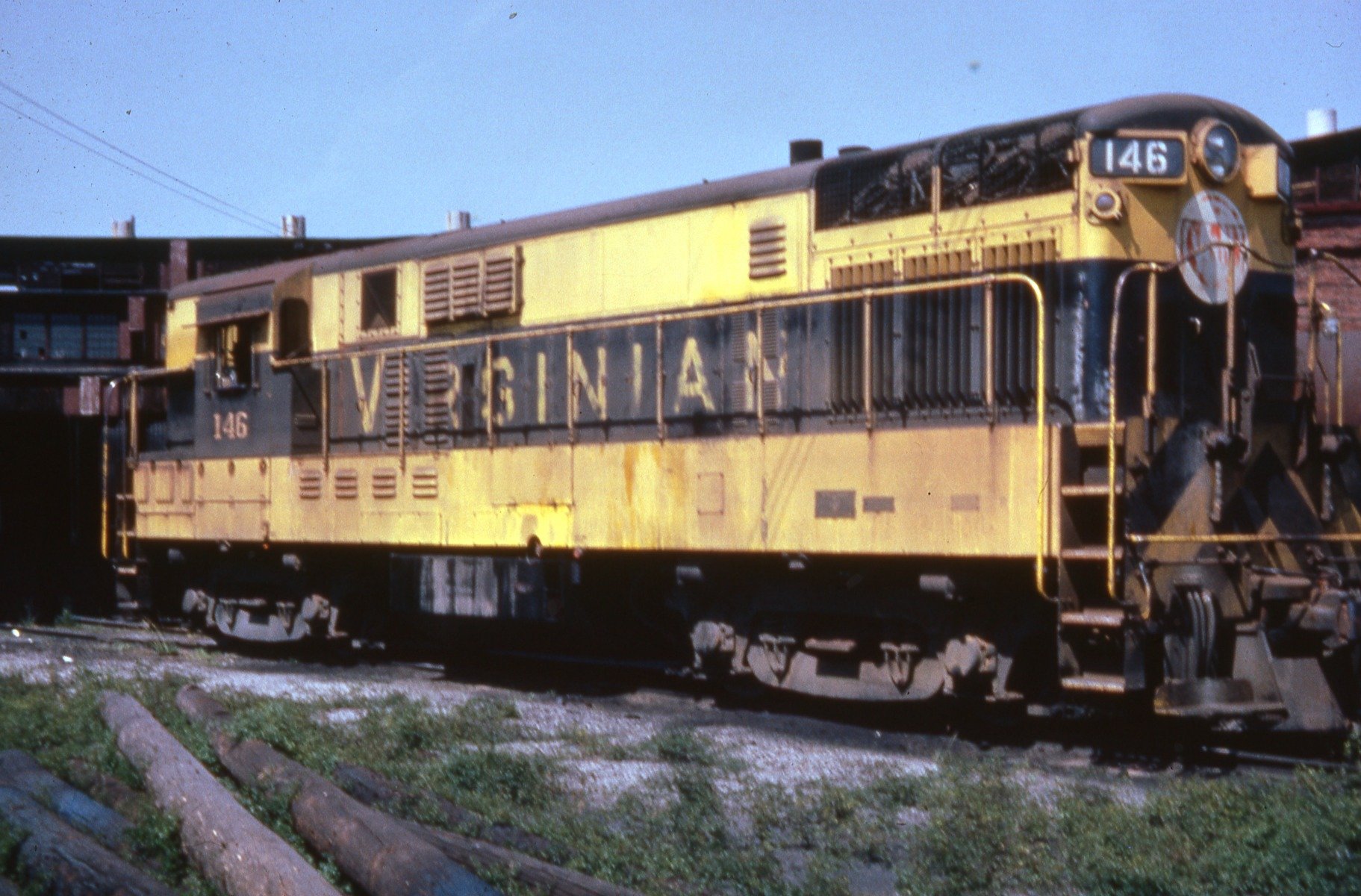
Akron, Canton & Youngstown
ACY bought two Phase III units: 207 and 208.
Chihuahua-Pacifico
CH-P bought 37 Phase III units; 501-535, 603, 604 to power its 671-mile main line from Ciudad Juarez through the mountains to the Pacific coast. Six were former EL units purchased second-hand in 1966. Two were former NYC units acquired from GE in 1967. Two were former EL units acquired in 1971.
Bosques de Chihuahua (Chihuahua Forests)
This 20-mile road in Chihuahua State, Mexico connected a lumber mill to the mainline of the Chihuahua Pacifico at Cumbre. It bought two Phase III locomotives: 501 and 1000.
Canadian Pacific
CPR received three orders in 1955, 1956 and 1957. Units 8547-8556 were equipped with Westinghouse traction motors and all others had GE traction motors. The first order units had their control stand installed to operate long hood forward and had larger fuel tanks and water tanks to supply steam generators. The second order units were also configured to operate long hood forward and assigned to western freight service. The third order units were configured to operate short hood forward. In 1959 CP embarked on a program to move the control stand in the cab of all its H-liners to operate short hood forward.
Only four units, 8553-8556, were equipped with steam generators for passenger service. They had a Vapor-Clarkson OK-4625 steam generator housed within their short hood. The remaining units had a 10-ton concrete block in their short hoods for ballast.
They did not often see duty in passenger service as their assigned region, the Kootenay Division and Kettle Valley Division in southern British Columbia, used Budd RDCs by 1957. Subsequently the steam generators were removed. No. 8556 had its removed on November 4, 1966. No.8553 had its removed on April 4, 1967 and No. 8554 had its removed on May 5, 1971. No. 8555 retained its steam generator until withdrawn from service on June 20, 1975. Their trucks were assembled with frames manufactured by DOFASCO in Hamilton, Ontario. The twin roof exhaust stacks had short extensions. On the top of the long hood, the fan position that did not have a fan was covered by sheet metal. All CP H16-44s were built with dynamic brakes.
The first two batches ordered, 8547-8556 (CP class DRS-16d) and 8601-8610 (CP class DRS-16h), were delivered for long hood forward operation. Units 8547-8556 had Westinghouse traction motors while all others had GE traction motors. They were delivered in the Tuscan with a gray nose on the long hood, block lettering and a gray background number board below the cab windows. The 12-inch numerals and 10-inch roadname lettering were in Tuscan. A thin yellow trim line was between the Tuscan and gray along the length of the carbody.
Caption – June 1967, Glacier BC. Photo by Jim Parker. Riddell collection
The third and forth order 8709-8728 (CP class DRS-16j), were delivered for short hood forward operation. They were painted similarly to the first two orders with the main differences being the gray nose on the short hood and the numerals were in yellow on a Tuscan background. Engines converted from long hood to short hood forward were 8547-8553, 8556, 8601-8610. This conversion was done between 1963 and 1967 in Ogden Shops, Calgary. Two engines, 8548 and 8552, were converted to short-hood-forward but kept their original long-hood-forward livery with block lettering.
Caption – June 1967, Revelstoke BC. Photo by Jim Parker. Riddell collection
The third paint scheme was applied to units painted after July 4, 1966 and is commonly referred to as the Tuscan and gray script scheme. Similar to the original block lettering scheme, it featured Canadian Pacific in script format on wider gray stripes along the sides to accommodate the taller name. The engine number under the cab windows was changed to Tuscan on gray. Engines 8710 and 8711 were the last two engines to receive the script paint scheme in May and June 1969 respectively.
Caption – September 28, 1974. Crowsnest BC. Photo by John Riddell
The fourth and final colour scheme some received was the CP Rail “action red” scheme with small multi-mark and 5-inch wide white end stripes, introduced in 1968. Units 8554 and 8555 were never converted to short-hood-forward operation however were painted in “action red” short hood forward with multi-mark on the long hood end.
Caption – December 1971, Calgary. Photo by John Riddell
Caption – May 1974, Midway BC. Photo by John Riddell
The following table contains a list of all CP H16-44’s and the paint schemes they received during their service lifetimes, as verified by photographs.
| Unit# | Block | Script | Action Red | Unit# | Block | Script | Action Red |
| 8547 | Yes | No | No | 8709 | Yes | No | Yes |
| 8548 | Yes | No | Yes | 8710 | Yes | Yes | No |
| 8549 | Yes | Yes | No | 8711 | Yes | Yes | ? |
| 8550 | Yes | No | No | 8712 | Yes | ? | Yes |
| 8551 | Yes | No | No | 8713 | Yes | ? | No |
| 8552 | Yes | No | Yes | 8714 | Yes | Yes | No |
| 8553 | Yes | Yes | No | 8715 | Yes | ? | Yes |
| 8554 | Yes | Yes | Yes | 8716 | Yes | ? | Yes |
| 8555 | Yes | No | Yes | 8717 | Yes | ? | Yes |
| 8556 | Yes | Yes | No | 8718 | Yes | Yes | ? |
| 8601 | Yes | No | ? | 8719 | Yes | Yes | Yes |
| 8602 | Yes | No | Yes | 8720 | Yes | No | Yes |
| 8603 | Yes | No | Yes | 8721 | Yes | ? | Yes |
| 8604 | Yes | No | Yes | 8722 | Yes | ? | ? |
| 8605 | Yes | No | No | 8723 | Yes | ? | Yes |
| 8606 | Yes | Yes | No | 8724 | Yes | ? | Yes |
| 8607 | Yes | No | Yes | 8725 | Yes | ? | Yes |
| 8608 | Yes | No | Yes | 8726 | Yes | No | Yes |
| 8609 | Yes | No | Yes | 8727 | Yes | ? | Yes |
| 8610 | Yes | No | No | 8728 | Yes | No | Yes |
Lettering was painted on each side of the pilot foot boards warning employees not to ride on the pilot. The original signs had yellow lettering on a red rectangle background. When units were repainted in “action red”, the signs were painted with black lettering on white background for improved visibility. On some Tuscan locos a white on black signs were painted.
Only the four H16-44’s delivered with steam generators (8553-8556) had beaver shields indicating they were passenger service units when required. The beaver shields were enamelled plaques bolted onto the front nose of each unit. The shields were about 39 inches in height.
The first order of H16-44’s (8548-8556) was delivered with two headlights arranged vertically inside a 14-inch diameter hinged glass unit. The remaining units were built with two sealed beam flush-mounted lights, arranged vertically, not enclosed behind a round glass unit.
Two different styles of fuel tanks were used. Flat-sided tanks were installed on units with steam generators, 8553-8556. The flat-sided tanks contained water for the steam generator and the 1,000 gallon fuel tank was located between the two side water tanks. The units without steam generators had a more rounded in-set fuel tank with a capacity of 1,500 gallons.
CPR H16-44’s had Nathan M3 three chime air horns. The bell was located between the fuel tank and the front truck on the engineer’s side of the unit.
Units 8715 and 8716 were fitted with low speed control for operation on Speno rail grinding trains which ran at speeds less than 2 mph.
The F-M engines commonly generated smoky exhaust and were plagued with problems. CP assigned most of its Fairbanks-Morse diesels to operate in southern British Columbia. out of Nelson where the maintenance of the F-M unconventional eight-cylinder opposed-piston diesels was concentrated in the Nelson Shops.
CP scrapped most surviving units in Ogden Shops, Calgary from 1971 to 1975.
CP sold the eight-cylinder, 16-opposed piston, engine blocks from twenty-three H16-44’s to Preco Equipment Co. of Houston, Texas for subsequent marine use.
Canadian National
CN purchased eighteen H16-44’s from CLC that were delivered between March and May, 1955. Originally numbered 1841-1858, in June 1956 they were renumbered 2200-2217. CN assigned them class CR-16a where ‘C’ is for Canadian Locomotive Company, ‘R’ is for Road switcher and ‘16’ is for 1600 horsepower. The carbody was the Phase III TrainMaster style. They included dynamic brakes and a 1,000 gallon fuel tank but lacked a steam generator. They were geared for 70 mph. Each end platform had MU stands to enable connecting to another unit. The trucks were assembled with frames manufactured by DOFASCO. After February 1955 the original large 14-inch diameter reflector-type headlights on many were replaced by twin sealed-beam headlights. The cab widows were fitted with characteristic CN sunshades. The twin roof exhaust stacks had short vertical extensions. All CN H16-44s were built with dynamic brakes and Westinghouse electrical equipment, air compressor and air brakes. Many units had a sheet metal deflector mounted across their roof to deflect the dynamic brake exhaust. They were painted green and yellow with the road name on a yellow panel along the frame sides. Some had the road name along the mid-height of the sides. After 1961 only the following eight were painted in the CN’s orange, black and gray scheme: 2202, 2203, 2204, 2205, 2213, 2214, 2215 and 2217.
Caption – Toronto. Riddell collection
Caption – Riddell collection
Caption – Riddell collection
They were normally assigned to mainline and way-freight service in CN’s Central Region and the Central Vermont territory.
All CN H16-44s were retired between February 1966 and April 1967 after only 12 years of service.
Where are they now
CP 8554 is privately owned and stored at a south-east Calgary industrial plant. CH-P 524 is on display at Temoris station in Chihuahua, Mexico. CH-P 525 is on display at Nueva Casas Grande in Chihuahua, Mexico.
For further reading
Boyd, Jim, “Fairbanks-Morse Locomotives in Color”, Morning Sun Books Inc. 11 Sussex Court, Edison, NJ. 1996.
Kirkland, John F., “The Diesel Builders, Volume One, Fairbanks-Morse and Lima-Hamilton “, Interurban Press, Glendale California, 1985.
Dover, Dan, “Issue 24, Extra 2200 South, August-September 1970,” Extra 2200 South The Locomotive Newsmagazine, 10980 Lemarie Drive, Cincinnati Ohio, 1970.
Pinkepank, Jerry A., “The Second Diesel Spotter’s Guide”. Kalmbach Publishing Co. Milwaukee, Wisconsin, 1973.
Rafuse, Allan E., “CNR’s CLC H16-44s”, CN Lines magazine Volume 8, Number 1, CN Lines Special Interest Group, Vancouver B.C., 1997.
Courtney, Glenn, Goslett, Ken, Holland, Kevin J., ‘Canadian National Railways Diesel Locomotives - Volume 2’, Canadian National Railways Historical Association, 2014.
Dean, M.W., Hanna, D.B., “Canadian Pacific Diesel Locomotives”, Fitzhenry & Whiteside, Don Mills, Ontario, 1981,


